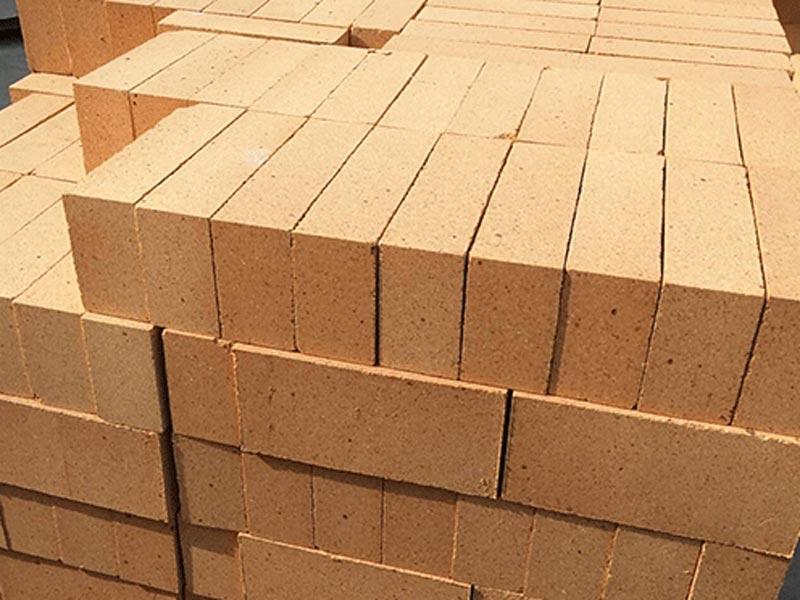News detail
Advantages of refractory bricks
In many industrial fields, refractory bricks have become an indispensable key material due to their excellent performance. Its advantages are reflected in many aspects, providing a strong guarantee for the stable operation of high-temperature industries.
High refractoriness
The primary advantage of refractory bricks is their excellent high-temperature resistance. They can maintain stable physical, chemical and structural properties for a long time at high temperatures, and can usually withstand high temperatures above 1000℃. Different types of refractory bricks have different refractoriness. The main component of silica bricks is silicon dioxide (SiO₂), which usually contains more than 93% and has a refractoriness of 1690-1730℃. It performs outstandingly in acidic refractory bricks and is often used in high-temperature parts such as the regenerator of glass melting furnaces and the carbonization chamber of coke ovens. The mineral composition of high-aluminum refractory bricks is corundum, mullite and glass phase. Its refractoriness increases with the increase of Al₂O₃ content, generally at 1750-1790℃. It is widely used in industrial kilns with high refractoriness requirements such as steelmaking electric furnaces and cement rotary kilns. In the converter of steel smelting, the temperature is often as high as about 1600℃. High-aluminum refractory bricks can remain stable in such a high temperature environment to ensure the normal operation of the converter.

Good chemical corrosion resistance
Refractory bricks can resist the corrosion of various acids, alkalis, salts and other chemical substances. This is due to the high content of inorganic compounds such as oxides and silicates in its material composition. In the chemical industry, various reactors, cracking furnaces and other equipment will produce a large amount of corrosive gases and liquids during operation. Taking the boiling furnace in sulfuric acid production as an example, there is a high temperature and strong acidic environment in the furnace. Silicon-aluminum refractory bricks can effectively resist the corrosion of acidic substances such as sulfuric acid with their stable chemical properties to ensure the normal operation of the equipment. In non-ferrous metal smelting, some slags contain a large amount of alkaline substances. Alkaline refractory bricks, such as magnesia refractory bricks, are mainly composed of magnesium oxide (MgO), with a content of more than 80% – 85%, which can well resist the erosion of alkaline slag.
Strong wear resistance
Refractory bricks have high hardness, high density, and are not easy to wear on the surface. In industrial production, the transportation and processing of some materials will cause strong friction on the lining of the equipment. For example, in the rotary kiln of cement production, the materials are constantly rolling and moving in the kiln, causing friction with the refractory bricks on the kiln wall. Silicon carbide refractory bricks have good wear resistance and can maintain surface finish and mechanical strength for a long time in such harsh wear environment, greatly extending the service life of the rotary kiln. In the blast furnace of the metallurgical industry, the loading and discharge of the charge will also cause wear on the lining refractory bricks, and the wear resistance of the refractory bricks ensures the stable operation of the blast furnace.
Excellent thermal insulation performance
Refractory bricks often contain some insulating materials, such as expanded perlite, expanded vermiculite, etc. These materials can improve the thermal insulation performance of refractory bricks, making them have excellent thermal insulation performance in high temperature environments. In industrial furnaces, good thermal insulation performance can effectively reduce heat loss and improve energy efficiency. Taking ceramic kilns as an example, using refractory bricks with good thermal insulation performance as linings can reduce the heat dissipated from the kiln to the outside, reduce fuel consumption, and thus reduce production costs. In some high-temperature heat treatment furnaces, the thermal insulation performance of refractory bricks can also ensure the uniformity of temperature in the furnace and improve the quality of products.
Good thermal shock stability
Refractory bricks can resist rapid changes in temperature without being destroyed. In actual industrial production, many kilns need to frequently perform heating and cooling operations. For example, in intermittent heating furnaces in the steel industry, each heating and cooling process will cause the temperature in the furnace to change dramatically. The good thermal shock stability of refractory bricks enables them to withstand such rapid temperature fluctuations without cracking or peeling, ensuring the normal operation and service life of the heating furnace. In the glassmaking furnace, the temperature also needs to be adjusted frequently, and the thermal shock stability of refractory bricks provides a guarantee for the stable production of glass.
High mechanical strength
Refractory bricks have high compressive strength and flexural strength at room temperature. This enables them to maintain structural integrity when bearing their own weight, material pressure and external mechanical impact. In the masonry of large industrial kilns, refractory bricks need to bear the weight of the upper bricks and the pressure of the materials in the furnace. For example, in the bottom and hearth of the blast furnace, refractory bricks need to withstand huge pressure, and their high mechanical strength ensures that there will be no safety accidents such as collapse during the long-term operation of the blast furnace. In some industrial furnaces that require frequent loading and unloading of materials, refractory bricks can also resist the impact of materials and maintain good working conditions.


Send inquiry
Please Leave your message you want to know! We will respond to your inquiry within 24 hours!